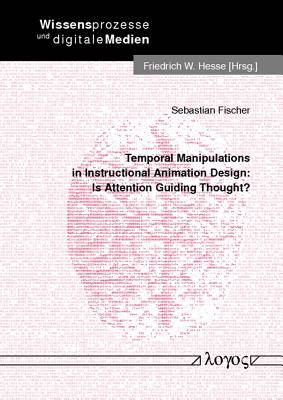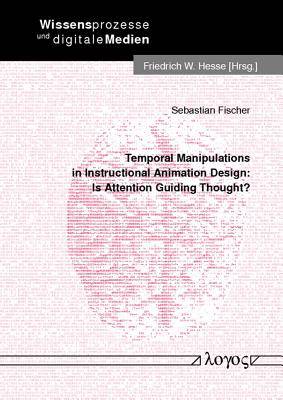
- Afhalen na 1 uur in een winkel met voorraad
- Gratis thuislevering in België vanaf € 30
- Ruim aanbod met 7 miljoen producten
- Afhalen na 1 uur in een winkel met voorraad
- Gratis thuislevering in België vanaf € 30
- Ruim aanbod met 7 miljoen producten
Zoeken
Temporal Manipulations in Instructional Animation Design
Is Attention Guiding Thought?
Sebastian Fischer
Paperback | Engels
€ 98,45
+ 196 punten
Omschrijving
This dissertation presents three experiments on learning with animations, introducing the application of temporal manipulations for instructional design. The experiments investigate effects of presentation speed manipulation on understanding the complex mechanical system of a pendulum clock. Time-lapse presentation is shown to improve comprehension on how the clock functions compared to realistic time depiction. The real-time animation is also inferior to the presentation of the pendulum clockwork as a static image. The effectiveness of the presentation speed manipulation is shown to be independent of local attention guidance. The presentation speed conditions neither differ in the profile of attention as measured by eye tracking, nor does cueing of different clock parts to guide attention show similar enhancement of - or interference with - the understanding outcome. These results indicate that decisions about temporal design characteristics strongly determine how beneficial an animation is for knowledge acquisition. Inability to substitute presentation speed manipulation by cueing to guide attention emphasises the independence of temporal manipulations. For complex dynamic content temporal manipulations provide promising opportunities for instructional designers to adapt animations to specific demands of the depicted content and the addressed audience.
Specificaties
Betrokkenen
- Auteur(s):
- Uitgeverij:
Inhoud
- Aantal bladzijden:
- 165
- Taal:
- Engels
Eigenschappen
- Productcode (EAN):
- 9783832519407
- Verschijningsdatum:
- 30/07/2008
- Uitvoering:
- Paperback
- Formaat:
- Trade paperback (VS)
- Afmetingen:
- 145 mm x 211 mm
- Gewicht:
- 284 g

Alleen bij Standaard Boekhandel
+ 196 punten op je klantenkaart van Standaard Boekhandel
Beoordelingen
We publiceren alleen reviews die voldoen aan de voorwaarden voor reviews. Bekijk onze voorwaarden voor reviews.








